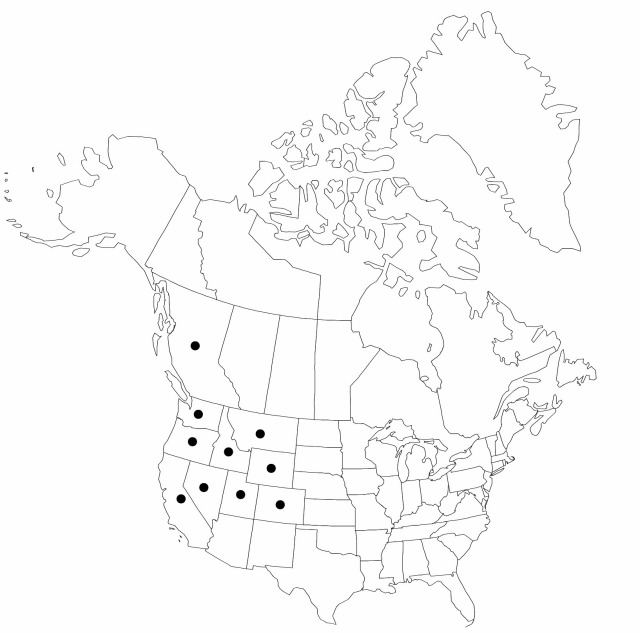Difference between revisions of "Carex praeceptorum"
in N. L. Britton et al., N. Amer. Fl. 18: 95. 1931.
FNA>Volume Importer |
FNA>Volume Importer |
(No difference)
| |
Revision as of 21:09, 16 December 2019
Plants loosely or densely cespitose, in small clumps; rhizomes short. Culms usually erect, slender, 10–20(–30) cm. Leaves: sheaths pale brown abaxially, inner band thin, hyaline, sometimes red tinged, concave at summit; ligules as long as wide; blades pale to gray-green, flat, 5–15 cm × 1.5–2.5 mm, shorter than culms, thin. Inflorescences 1–1.5(–2) cm × 5–10 mm; proximal bracts bristlelike, prolonged, distal bracts scalelike. Spikes 3–5, gynecandrous, approximate, sessile, containing 8–15(–20) perigynia; terminal spike staminate for less than 1/2 of length, shortly clavate, oblong-ovoid, 4–7 × 3–5 mm. Pistillate scales light chestnut-brown with lighter center and hyaline margins, ovate, subequal to perigynia, apex obtuse. Perigynia appressed-ascending, pale brown, often darker brown in age, finely several-veined, elliptic-ovate, 1.5–2 × 1 mm, widest near middle, membranous; beak short, entire or slightly serrulate. Achenes pale brown, broadly obovate, 1.25 × 0.8–1 mm, dull to slightly glossy.
Phenology: Fruiting Jul–Sep.
Habitat: Boggy places, wet soil around montane ponds and lakes
Elevation: 2300–3500 m
Distribution

B.C., Calif., Colo., Idaho, Mont., Nev., Oreg., Utah, Wash., Wyo.
Discussion
Selected References
None.
